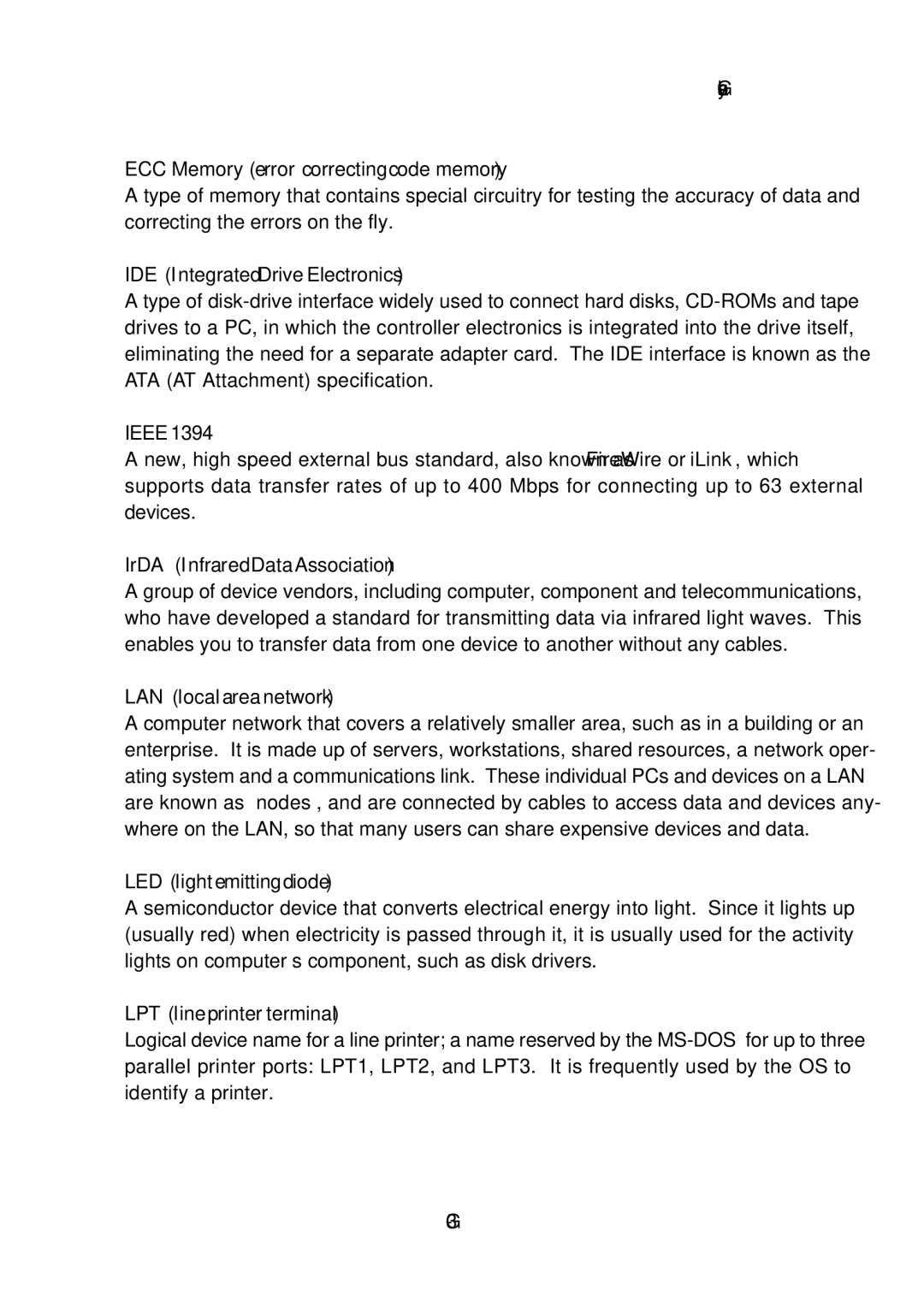Glossary
ECC Memory (error correcting code memory)
A type of memory that contains special circuitry for testing the accuracy of data and correcting the errors on the fly.
IDE (Integrated Drive Electronics)
A type of
IEEE1394
A new, high speed external bus standard, also known as FireWire or iLink, which supports data transfer rates of up to 400 Mbps for connecting up to 63 external devices.
IrDA (Infrared Data Association)
A group of device vendors, including computer, component and telecommunications, who have developed a standard for transmitting data via infrared light waves. This enables you to transfer data from one device to another without any cables.
LAN (local area network)
A computer network that covers a relatively smaller area, such as in a building or an enterprise. It is made up of servers, workstations, shared resources, a network oper- ating system and a communications link. These individual PCs and devices on a LAN are known as “nodes”, and are connected by cables to access data and devices any- where on the LAN, so that many users can share expensive devices and data.
LED (light emitting diode)
A semiconductor device that converts electrical energy into light. Since it lights up (usually red) when electricity is passed through it, it is usually used for the activity lights on computer’s component, such as disk drivers.
LPT (line printer terminal)
Logical device name for a line printer; a name reserved by the
